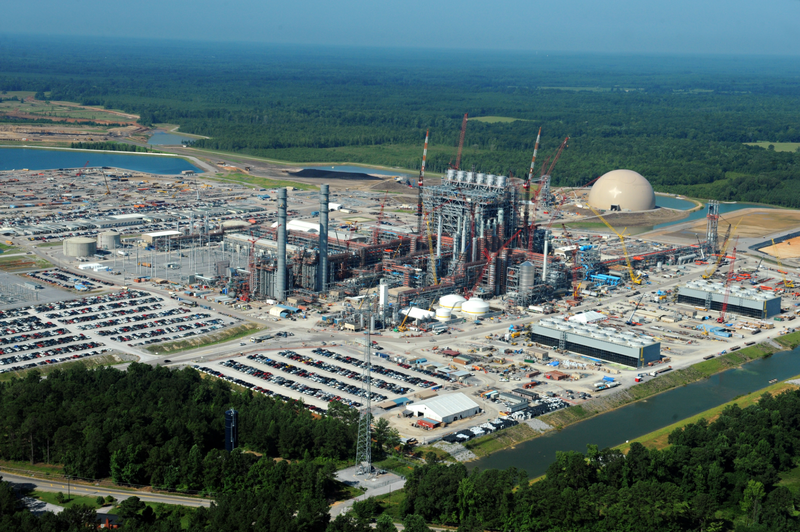A Multibillion-Dollar Clean Coal Plant Never Worked, and Now It’s Been Imploded

Residents in Kemper County, Mississippi, were startled early Saturday morning by a “loud explosion” coming from the local coal plant. It wasn’t an industrial accident, though. Instead, it was the planned demolition of parts of the Kemper Plant.
Dramatic footage posted to Twitter shows the plant’s implosion. (You should really watch it.) Local outlet KTOK reported that the explosions were meant to remove towers used in turning coal to gas as part of the plant’s original design—a design that failed spectacularly. The demolition is the last chapter in a decade-long, multi-billion-dollar disaster of a story about attempts to make clean coal happen.
During the first years of its construction, the Kemper plant represented the pinnacle of technological progress and the possibility of a continued future for the coal industry. The project began construction in 2010 at a cost of $7.5 billion. The Kemper facility was supposed to be the largest “clean coal” plant in the world, a proof-of-concept for the industry that it’s possible to turn cheap lignite coal into fuel while sending relatively scant amounts of carbon dioxide into the atmosphere. The promise was to turn one of the dirtiest fuel sources on Earth into something that was, if not zero-emissions, at least Less Bad.
The idea of turning coal into a liquid gas has been around for decades. But as the coal industry began to see demand drop, it saw coal-to-gas as a lifeline to keep on digging. The Kemper plant was supposed to use what’s known as Integrated Gasification Combined Cycle (IGCC) technology, a system that’s supposed to take the coal and turn it into a gas for burning. To add a cherry on top, the owner of Kemper, utility Southern Company, also promised that Kemper plant would capture 65% of the carbon dioxide it produced. Since 2000, 25 major IGCC plants (and several smaller ones) have been proposed in the U.S., but only two ever started construction: Kemper and a smaller Duke Energy-owned facility in Indiana. (Another facility in Florida was built in the mid-1990s.)
Unfortunately for Kemper, the project was doomed from the start. The plant was supposed to come online in 2014, but by 2017 was three years behind schedule and $4 billion over budget. The technology proposed for use at Kemper had only been tested at much smaller, non-commercial facilities. Getting it online at a bigger scale was a lot harder than what had been promised. Investigations into the management of the plant found that all that public support and excitement actually incentivized plant owners and developers to hide problems and underestimate costs. Ratepayers sued the company, and the SEC launched an investigation into what went wrong.
By 2017, the project was so behind that Southern Company and the Mississippi Public Service Commission decided to ax the coal gasification and carbon capture portion of the plant, refiguring it to simply run on natural gas. This means that the utility paid $7.5 billion to build a natural gas plant that could have been built, according to some estimates, for around $1.5 billion. This explosion was the final nail in the coffin for the portion of the plant designed to burn coal.
The Duke Energy facility is still running, albeit under a shroud of controversy, technical delays, and additional costs. It consumes a lot of the energy it creates in the gasification process, making it highly inefficient. The utility is also currently trying to push extra costs from the plant’s construction onto ratepayers.
Even as the Kemper plant is destroyed, fossil fuel interests are putting their hopes in the next generation of unproven technologies that will help make “clean fuel:” The industry is increasingly pushing hydrogen, forms of carbon capture, and other fantastic-sounding technologies as climate-friendly ways to keep on using coal, oil, and gas. If some of these technologies can scale up, that would be great news for the planet. But early returns are not promising, and the corpse of the Kemper clean coal plant should serve as a reminder that the industry has a history of big promises on unproven technology that all too often end up imploding.
You can return to the main Market News page, or press the Back button on your browser.

